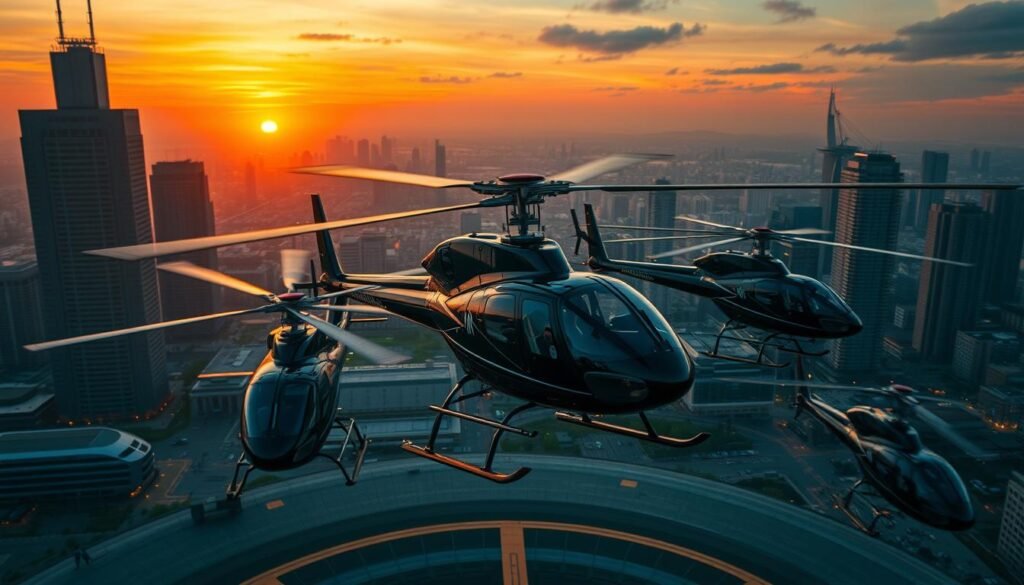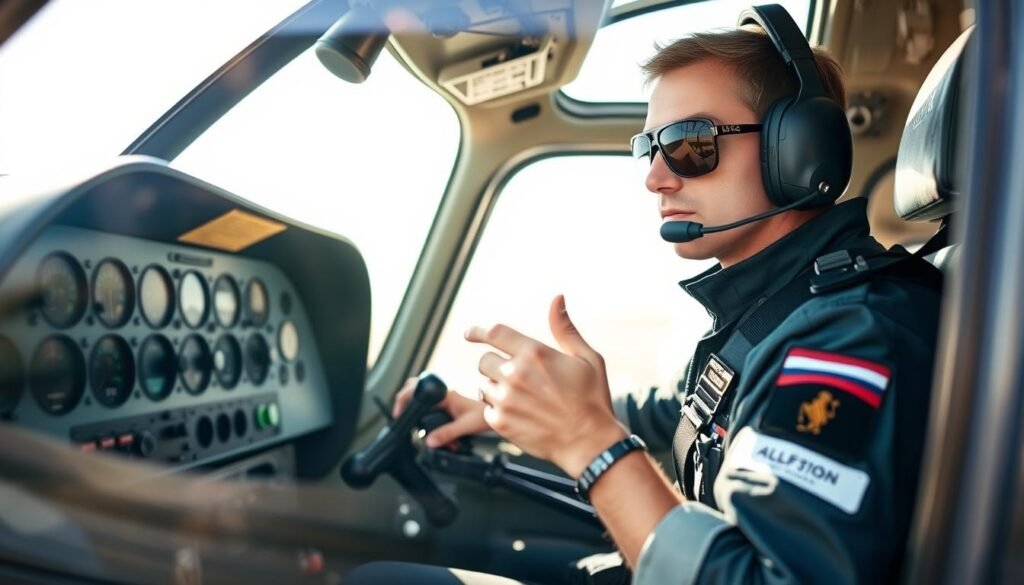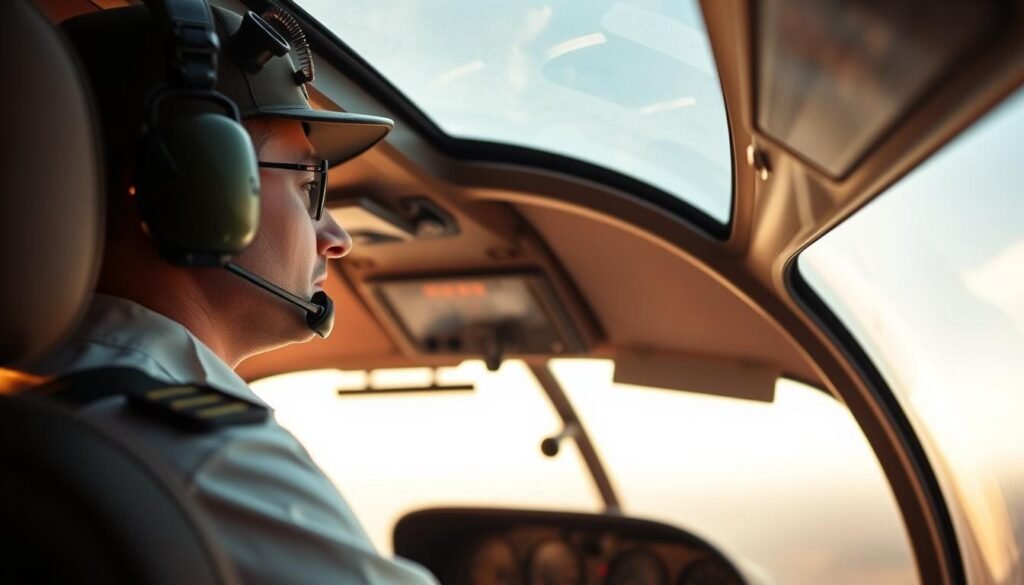Becoming a helicopter pilot is an exciting and rewarding career path that offers the opportunity to fly in various environments, from scenic tours to emergency rescues. Whether you’re aiming for a career in commercial aviation, emergency services, or simply want to fly recreationally, this step-by-step guide will walk you through the essential stages to becoming a helicopter pilot.
1. Research the Requirements
Before embarking on your journey, it’s crucial to understand the requirements for becoming a helicopter pilot. Requirements vary depending on whether you want to fly recreationally or pursue a commercial pilot career. Here are the basic steps:
- Minimum Age: You must be at least 16 years old to fly solo as a student pilot, and 17 years old to obtain a private pilot license (PPL).
- Language Proficiency: You must be able to speak, read, and understand English to qualify for helicopter training, as English is the international language of aviation.
- Medical Fitness: All pilots must pass a medical exam administered by an FAA-certified Aviation Medical Examiner (AME). There are different classes of medical certificates depending on your career goals:
- Class 3 Medical Certificate: Required for private pilots.
- Class 2 Medical Certificate: Required for commercial pilots.
- Class 1 Medical Certificate: Required for airline transport pilots.
2. Decide on Private vs. Commercial Pilot License
The next step is to decide whether you want to pursue a Private Pilot License (PPL) or a Commercial Pilot License (CPL).
- Private Pilot License (PPL): This license allows you to fly helicopters for recreational purposes. You won’t be able to charge for your services, but it’s ideal for personal use or hobby flying.
- Commercial Pilot License (CPL): If you want to fly professionally, such as for tourism, medical evacuation, or corporate transport, you’ll need a commercial license. This allows you to be paid for your services and opens up many career opportunities.
3. Enroll in a Reputable Flight School
Choosing a reputable flight school is a key part of your training journey. Look for schools with certified instructors, well-maintained helicopters, and strong student success rates. You’ll want to consider factors such as:
- Location: Consider weather conditions, availability of airspace, and proximity to where you live.
- Aircraft: Make sure the school has modern, well-maintained helicopters, such as Robinson R22s or R44s, which are commonly used in training.
- Instructors: Instructors should be experienced and FAA-certified with solid backgrounds in training pilots.
- Cost: Flight training can be expensive, ranging from $12,000 to $15,000 for a PPL and $50,000 to $80,000 for a CPL. Make sure you budget accordingly.
4. Complete Ground School
Before taking to the skies, you’ll need to complete ground school, where you’ll learn the theoretical knowledge required to fly a helicopter. Ground school covers:
- Aerodynamics: Understanding how helicopters fly and the physics behind rotary-wing aircraft.
- Navigation: Learning how to read aeronautical charts, navigate by instruments, and plan flight routes.
- Weather: Studying meteorology to understand how weather impacts flight safety.
- Helicopter Systems: Learning about the mechanics and systems of a helicopter, such as the engine, rotor system, and avionics.
- FAA Regulations: Familiarizing yourself with aviation laws and regulations that govern helicopter operations.
Ground school can be completed in person at your flight school or through online programs.
5. Accumulate Flight Hours
After completing ground school, you’ll begin practical flight training, which is the core of becoming a helicopter pilot. You’ll need to log a specific number of flight hours before being eligible for a license.
- Private Pilot License (PPL): Requires at least 40 flight hours, which includes both dual instruction (with an instructor) and solo flight.
- Commercial Pilot License (CPL): Requires 150-200 flight hours (depending on the country), including cross-country flights, night flying, and instrument training.
During your flight training, you’ll learn essential skills such as:
- Hovering: One of the most difficult aspects of flying a helicopter, hovering requires precise control and coordination.
- Takeoff and Landing: Mastering smooth takeoffs and landings in various conditions.
- Emergency Procedures: Learning how to handle engine failure, autorotations, and other in-flight emergencies.
- Cross-Country Flights: Planning and executing long-distance flights to improve navigation and flight planning skills.
6. Pass the FAA Written Exam
After logging your required flight hours and completing ground school, you’ll need to pass the FAA written exam. The exam tests your knowledge of:
- Aviation regulations
- Helicopter systems and operations
- Weather theory and forecasts
- Navigation
- Flight planning
The written exam consists of 60 multiple-choice questions, and you need a passing score of 70% or higher.
7. Pass the Check Ride
The final step to earning your pilot license is the check ride, which is the practical flight test administered by an FAA-certified examiner. The check ride consists of two parts:
- Oral Examination: The examiner will ask you questions about helicopter systems, regulations, and flight planning to test your theoretical knowledge.
- Flight Test: You’ll perform various maneuvers and demonstrate your ability to fly safely. This includes takeoffs, landings, autorotations, and handling emergency procedures.
Upon successful completion of the check ride, you will be awarded your Private Pilot License (PPL) or Commercial Pilot License (CPL).
8. Consider Advanced Certifications and Specializations
After obtaining your license, you may choose to pursue advanced certifications to open up more career opportunities. These include:
- Instrument Rating (IR): Allows you to fly in low-visibility conditions using only your instruments. This is essential for commercial pilots who need to operate in various weather conditions.
- Certified Flight Instructor (CFI): Allows you to train other aspiring pilots. Many commercial pilots start as instructors to build flight hours.
- Turbine Transition Training: Helicopters with turbine engines are more powerful than piston-engine helicopters. Transition training is necessary to fly helicopters like the Bell 206 or Airbus H145.
9. Build Flight Hours and Gain Experience
Once you have your license, the next step is to build flight hours and experience. Many new pilots start as flight instructors to gain hours, while others may work in tours, aerial photography, or agriculture. Commercial helicopter jobs often require between 500 and 1,000 flight hours, so accumulating these hours is critical for advancing your career.
10. Explore Career Opportunities
With enough experience and flight hours, you can begin exploring various career paths. Popular career options for helicopter pilots include:
- Search and Rescue (SAR) Pilot
- Emergency Medical Services (EMS) Pilot
- Offshore Oil Rig Pilot
- Tour Pilot
- Corporate Helicopter Pilot
- Firefighting Pilot
Conclusion
Becoming a helicopter pilot requires dedication, time, and financial commitment, but the rewards of flying and the career opportunities that come with it make the effort worthwhile. Whether you’re looking to fly for personal enjoyment or start a professional career, following these steps will guide you on your way to obtaining your pilot license and launching a successful aviation career.
Related Articles
- Women in Helicopter Aviation: Breaking Barriers and Building a Career
- Freelance Helicopter Pilots: How to Build a Successful Career
- Helicopter Pilot Licensing Requirements: A Global Overview
- How to Network and Advance Your Career as a Helicopter Pilot
- What to Expect in Your First Year as a Commercial Helicopter Pilot
More from This Category
- Work-Life Balance for Helicopter Pilots: Managing a Demanding Career
- How to Transition from Fixed-Wing to Helicopter Flying: Tips for Pilots
- The Best Industries for Helicopter Pilots: Job Opportunities Beyond Passenger Transport
- Medical Requirements for Helicopter Pilots: What You Need to Know
- How to Build Flight Hours as a New Helicopter Pilot
- Essential Skills Every Helicopter Pilot Needs to Succeed
- Top Helicopter Pilot Training Schools: How to Choose the Best Program
- Private vs. Commercial Helicopter Pilot: Which Career Path Is Right for You?
- Helicopter Pilot Salary: What You Can Expect at Every Stage of Your Career
- How to Become a Helicopter Pilot: A Step-by-Step Guide



